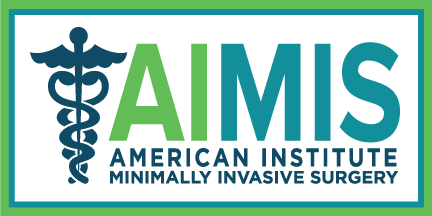Would You Want to Be the First Patient of a Surgeon Who Learned New Technology Online?
- Christopher Guinn

- Jul 9
- 2 min read
Updated: Jul 17
By: Christopher Guinn, CEO AIMIS

In the years following COVID-19, physician learning habits have changed dramatically. The pandemic accelerated a trend that had already begun doctors opting for online CME (continuing medical education) over traditional in-person events. And on the surface, this shift makes sense:
– Less time out of the office or OR
– No travel or hotel costs
– Access to accredited education from anywhere
– Self-paced learning options
But while virtual education has its place particularly for foundational learning and quick refreshers there are critical limitations that online CME simply cannot overcome. And in the world of advanced surgical practice, these limitations have real consequences.
Hands-On Skills Require Hands-On Training
No matter how high the resolution or how polished the video, you cant truly teach surgical techniques, new device platforms, or tactile procedural nuances through a screen. You cannot replicate the feel of tissue, the tension of suture, or the motion arc of a new robotic instrument.
Would you want to be the first patient of a surgeon who learned a new technology solely from a webinar?
In-person training offers what online never can: the muscle memory, procedural flow, and real-time troubleshooting that build clinical confidence.Peer-to-Peer Learning Still Happens Best… with PeersThere’s another layer that gets lost when learning goes virtual: community.The informal exchanges that happen over coffee breaks, hallway chats, or hands-on workshops areoften where some of the most meaningful learning occurs. You meet faculty you admire. You exchange cases with peers from across the country. You discover a new way to manage a complication that wasnt even on the agenda.Camaraderie and mentorship don’t happen in a chat window.
Building Trust in New Technology
One of the most overlooked benefits of in-person CME is the role it plays in technology adoption. Whether it’s a new robotic platform, a next-generation mesh, or a novel non-opioid medication, surgeons are more likely to adopt new tools when they’ve seen them firsthand, talked to early adopters, and tried them in a cadaver lab or simulation setting.Online modules can introduce a concept. But in-person education builds belief.
The AIMIS Model: Regional, Relevant, Real-World
At the American Institute of Minimally Invasive Surgery (AIMIS), we’ve embraced a hybrid futurebut we havent abandoned the power of in-person.Each year, AIMIS holds regional surgical education meetings across the country bringing together expert faculty, emerging technologies, and peer surgeons in a dynamic, hands-on environment. We focus on specialties like GYN surgery, general surgery, and robotic platforms, with special emphasis on non-opioid strategies, safety, and patient outcomes.And yes CME credits are always included.
By keeping meetings regional, AIMIS reduces travel burdens while preserving all the value of in-person interaction, networking, and hands-on learning.
The Path Forward
Virtual CME isn’t going anywhere, and it shouldn’t. But as we move forward, we must recognize that real growth especially when it involves new technology or evolving standards of care requires real-world, real-time interaction.If we want better-trained surgeons, safer patients, and smarter adoption of innovation, we need to prioritize in-person learning as a complement not a casualty of the digital age.








Comments